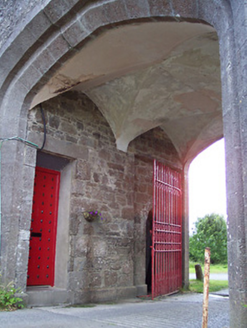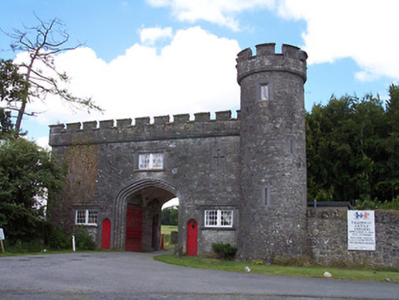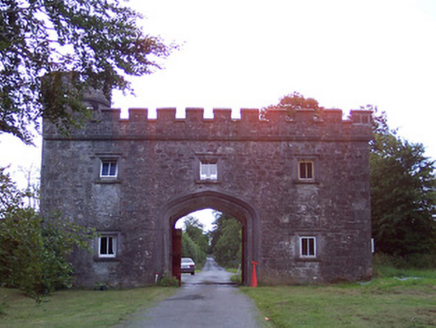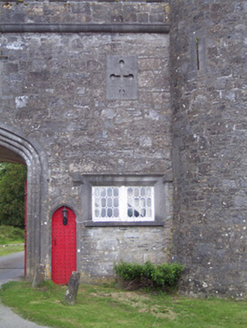Survey Data
Reg No
15302001
Rating
Regional
Categories of Special Interest
Architectural, Artistic
Previous Name
Pakenham Hall
Original Use
Gate lodge
In Use As
Gate lodge
Date
1810 - 1830
Coordinates
245207, 270766
Date Recorded
07/07/2004
Date Updated
--/--/--
Description
Detached three-bay two-storey castellated gate lodge, built c.1820, having an integral Tudor Gothic-arched carriage arch to the centre of the main body of the building and a single-bay three-storey tower on polygonal-plan (with slight base batter) attached to the north end of the main façade (east). Now in use as private residence. Castellated parapet to main building and to the attached tower. Constructed of limestone rubble with cut-stone surrounds, string courses and recessed cross motifs. Staged cut stone surrounds to the central carriage arch. Square-headed openings with multi-paned casement windows, cut stone sills and with hoodmouldings over. Loop-hole openings to adjoining tower. Pair of wrought-iron gates to integral carriage arch with a plastered double-vaulted ceiling over. Main entrance is flanked by a pair of Tudor Gothic-arched sentry posts having studded timber doors. Set back from road at start of long tree-lined avenue leading to Tullynally Castle (15400321).
Appraisal
This handsome Gothic Revival gate lodge was designed by James Shiel, a noted architect of his day and former clerk of renowned architect Francis Johnston (1760-1829) Shiel also carried out extensive remodelling works on Tullynally Castle (15400321) itself at the same time as well as notable building works, also in a castellated Georgian Gothic style at Killua Castle (Clonmellon), Knockdrin Castle near Mullingar and the Gothic arch and lodge at Dunsany Castle, Co. Meath. This structure is well-maintained and retains many original features, as well as its original form and massing. It occupies a prominent location and forms a pleasing vista on a main road leading out of Castlepollard from the west and marks the start of a long tree-lined avenue to Tullynally Castle itself. It forms part of an important group of demesne-related structures associated with Tullynally Castle (15400321) along with the main castle, gardens and the farmyard.







